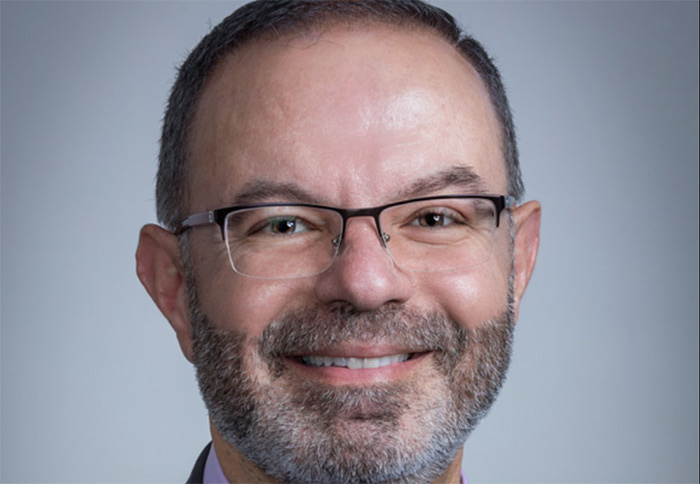CUSD ready for special education students
Claremont Unified School District has taken the reins back from LA County in an effort to gain more financial and administrative control when it comes to serving the needs of special education students.
Because of the change-up, effective this coming fall, room must be made in CUSD and neighboring districts for a number of students once educated through county programs. This means 45 to 60 new students, some severely disabled, will be coming to Claremont schools, according to Assistant Superintendent of Schools Mike Bateman.
As it stands, Danbury Elementary School—home to some 75 kids with physical disabilities and/or health impairments—will welcome an estimated 25 new students. The impact of the influx will be lessened, because about 16 current Danbury students will be transferred to the Pomona Unified School District. CUSD offered to keep these inter-district transfer students at Danbury for the sake of comfort and continuity, Mr. Bateman said, but Pomona opted to make room for the kids in their district.
Minus those transfers, Danbury will ultimately get only nine or 10 additional students after leaving the county. El Roble Intermediate School is expecting to take on four or five new students, while Claremont High School is planning for 12 to 15 new students. Mr. Bateman emphasized that the numbers are changing every day. The final amount of disabled students Claremont will be serving due to the restructuring will be announced at an August school board meeting.
CUSD is preparing for the change with some new employees, including new aides and another nurse at the district as well as two new teachers at Danbury, according to Mr. Bateman.
The new hires will be partially funded by a combination of state and federal funds allocated for every school child as well as funding aimed at supporting special education programs. The district may also benefit from some sub-grants available to assist students with multiple disabilities. CUSD also hopes it will eventually receive a bit more state and federal funding as a result of the emancipation from Los Angeles County.
Under the Individuals with Disabilities Education Act (IDEA), public schools must provide a free, appropriate education to special education students ranging in age from 3 to 21. Such programs, however, are not fully funded on either the federal or state level. As a result, CUSD—like all districts—must support special education with money from its general fund, according to Assistant Superintendent of Business Services Lisa Shoemaker.
A bit of background
By state law, all primary and secondary schools must belong to a Special Education Local Plan Area (SELPA), an organization responsible for implementing the requirements of the IDEA.
CUSD belongs to the East San Gabriel Valley SELPA, a partnership of local districts that pool their resources to achieve economy of scale and more options in the area of special education. Other consortium members include the Azusa, Baldwin Park, Bassett, Bonita, Charter Oak, Covina-Valley, Glendora, Pomona, Walnut Valley and West Covina districts.
For three decades, the Los Angeles County Office of Education has served as the administrative unit for the East San Gabriel Valley SELPA, distributing funding, organizing hiring and providing space for students deemed in need of county programs. No longer.
Beginning with the 2014-2015 school year, the East San Gabriel Valley SELPA will break away from LACOE, transferring the operation of special education programs to member districts.
“The SELPA thought we could run the programs cheaper and better, rather than having them administered by LA County,” Mr. Bateman said.
In a recent statement posted on the East San Gabriel Valley SELPA website, the consortium noted that the cost of contracting with the LACOE has risen sharply in recent years, largely thanks to the escalating overhead of running the county offices in Downey.
The local SELPA also hopes the change will cut red tape.
Currently, if CUSD wants to hire a new special education teacher or a classroom or health aide, they have to go through the LACOE office. Because LACOE recruits staff for all of Los Angeles County, there is often a significant delay in filling vacancies in the east San Gabriel Valley.
The LACOE also designs programs and develops curricula, so the switch-up will allow Claremont and other consortium members more freedom in how they educate students. This academic elbowroom will make it easier for CUSD to align special education programs with district curriculum. The referral process for students who need special services or would benefit from transfer to another district specializing in their disability will also be streamlined.
The board of the East San Gabriel Valley SELPA, comprised of the superintendents of each member district, also believes students will benefit from being on a school campus rather than in a classroom in a county facility, according to the organization’s website.
“Students attending programs on district school sites will be integral parts of the student body, because they will be district students rather than LACOE students. We expect them to benefit socially and academically from more opportunities for inclusion with their nondisabled peers.”
Questions are anticipated
Claremont does not educate all district students with disabilities but instead reaches out for assistance to districts in the local SELPA, each of which has a specialty. For instance, CUSD regularly sends students who are deaf or hard of hearing to the Covina Unified School District, which is known to excel in educating hearing-impaired students. Azusa schools’ specialty is teaching visually impaired students, while West Covina is prepared to accept severely emotionally disturbed kids. CUSD, which specializes in teaching orthopedically handicapped students as well as kids who are considered medically fragile, has long accepted students from other districts falling into those categories.
Claremont parents with special education students may have some questions, such as, “Will my child have to transfer to another district based on this policy?”
The East San Gabriel Valley SELPA statement on the dissolution of its partnership with the Los Angeles Office of Education, available at www.esgvselpa.org, suggests that anyone with questions about what the move means for their family should contact the director of special education for their school district.
CUSD Special Education Director Judy Geske had not returned calls from the COURIER as of press time.
—Sarah Torribio
storribio@claremont-courier.com








0 Comments